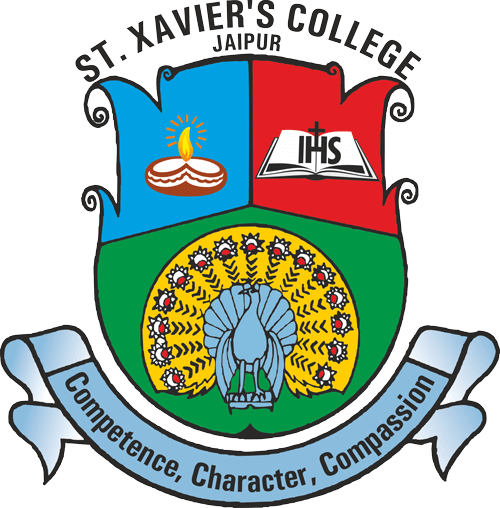


Affiliated to the University of Rajasthan Approved under Section 2(f) and 12(B) of UGC Act, 1956
A Christian Minority Educational Institution under Section 2(g) of NCMEI Act, 2004

| Volume-II (Session 2024-25) | ||||
|---|---|---|---|---|
| Issue | Theme | Period | Co-ordinators | Link |
| IQAC Newsletter - ISSUE 1 | Faculty Development and Training Programs @ SXCJ | July 2024 (May - June 2024) | Dr Renu Jadon Dr. Happy Agrawal Dr. Shruti Rawal Mr Surendra Singh Chauhan | View PDF |
| IQAC Newsletter - ISSUE 2 | Indian Knowledge System & Higher Education | September 2024 (July - August 2024) | Dr. Gurneet Kaur Suri Dr. Meeta Sharma Dr. Priya Sahrawat Mr. Kiran Kumar M | View PDF |
| IQAC Newsletter - ISSUE 3 | Artificial Intelligence Tools for Higher Education Institutions | November 2024 (September - October 2024) | Dr. Arpita Banerjee Dr. Happy Agarwal Ms. Aneesha Jain Mr. Rohan Thomas Cherian | View PDF |
| IQAC Newsletter - ISSUE 4 | Journey Towards Grading and Excellence | January 2025 (November - December 2024) | Dr. Senthil Kumar Ms. Ritu Sisodia Dr. Ekta Dr. Atiqa Kelsy Ms. Sanbrita Acharya | View PDF |
| Volume-I (Session 2023-24) | ||||
|---|---|---|---|---|
| Issue | Theme | Period | Co-ordinators | Link |
| IQAC Newsletter - ISSUE 1 | Understanding the NEP 2020 Policy and its Implementation | July 2023 (March - June 2023) | Dr. Shikha Arora Bakshi (IQAC, Member) Dr. Vaishali Singh (IQAC, Member) | View PDF |
| IQAC Newsletter - ISSUE 2 | Transformation of Learning Landscape with Library Digitalizationn | September 2023 (July -August 2023) | Sr. Dr. Ligimol Louis (IQAC Member) Dr. Antony Nitin Raja (IQAC Member) Ms. Loveleen Mathur (Asst. Librarian) | View PDF |
| IQAC Newsletter - ISSUE 3 | Well Being for All | November 2023 (September - October 2023) | Ms. Nupur Chauhan Ms. Ruhi Sinha | View PDF |
| IQAC Newsletter - ISSUE 4 | St. Xavier's College Jaipur’s Initiatives Towards SDGs | January 2024 (November - December 2023) | Sr Dr Ligimol Louis (HOD, Science & IQAC Member) Dr Antony Nitin Raja (IQAC member) Dr Mahak Bhatia Dr Juniet Maria Jose Dr M Shanmugam | View PDF |
| IQAC Newsletter - ISSUE 5 | Nation Building & Social Extension Activities by SXCJ | March 2024 (January - February 2024) | Dr. Ranjit Kaur (Academic Coordinator & IQAC Member) Dr. Poorvi Medatwal Dr Mamta Pareek Mr Rohan Thomas Cherian | View PDF |
| IQAC Newsletter - ISSUE 6 | Memorandums of Understanding: Unleashing Potential Through Collaborative Agreements “Ignite, Innovate, Succeed” | May 2024 (March - April 2024) | Dr Nitasha Khatri (IQAC Member & FDTEPC Coordinator) Ms Pushpanjali Saini Mr Kiran Kumar Ms Ruhi Sinha | View PDF |